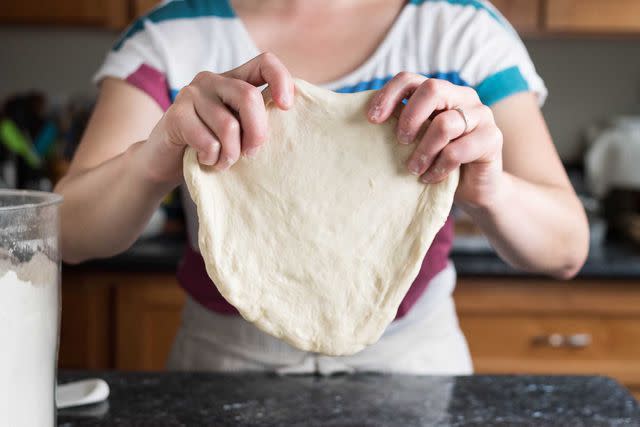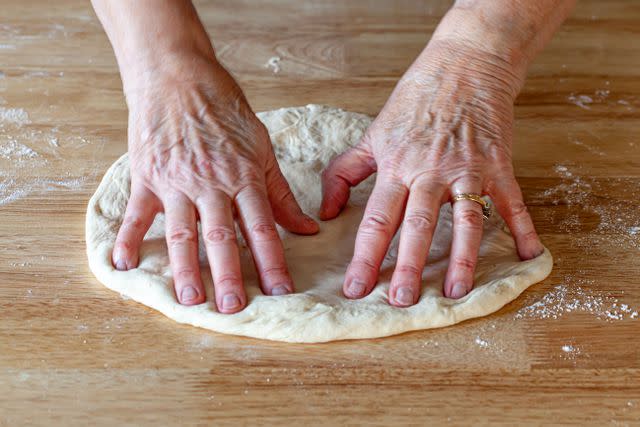King Arthur Weighs In: What To Do When Your Pizza Dough Keeps Shrinking Back
No special ingredients or techniques are required.
:max_bytes(150000):strip_icc():format(jpeg)/Simply-Recipes-Stretch-Pizza-LEAD-01-f13f384afcc3480b9847cd361a44badf.jpg)
Simply Recipes / Adobe Stock
Sometimes I make pizza dough from scratch and other times I grab a round or two of dough from the grocery store. Preparing toppings and heating my baking steel is easy. So often, the hardest part of making pizza is dealing with the dough: it shrinks back when I try to shape it, something I notice more with store-bought dough.
So I was excited to see that my favorite baking pros, King Arthur, recently weighed in on the best way to deal with pizza dough that keeps shrinking back on you.
Their tips include adding special ingredients to the dough and recommendations for how long to rest it. The one simple but brilliant tip that stood out to me above all? When your pizza dough keeps shrinking, you’ve got to give it a rest!

What To Do When the Pizza Dough Keeps Shrinking Back
Ideally, you would have rested your pizza dough at room temperature for at least an hour before shaping. This is a perfect time to heat your oven or grill and prepare your toppings.
Once you get into shaping, it does help your efforts to push the pizza dough from the center out so that it stretches, rather than pulling it out from the sides.
If the dough shrinks back a lot, and you feel like you are fighting for your life to get it to stretch out, King Arthur wants you to relax. No, really! Cover it with a clean towel so that it doesn't dry out and rest it for at least 15 minutes before trying again.

Why Resting Makes Pizza Dough Easier To Work With
Gluten is a protein found in flour that develops when you knead the dough. It's responsible for pizza’s signature chew. It's also what often makes pizza dough difficult to stretch—when the gluten is tight, the dough becomes resistant to stretching.
Working the dough develops the protein, so it is often the tightest right after being made. That is why recipes call for a long rest at room temperature or in the fridge to allow the gluten to relax a bit before the dough is shaped and baked.
The gluten is also tight when cold. This is why it helps to bring the dough to room temperature before shaping—the gluten relaxes, making the dough a little looser and easier to work with.
I've worked with some finicky doughs that require shaping, resting, more shaping, and more resting to get them the right size and thickness. Patience always gets me there!
Read the original article on Simply Recipes.

 Yahoo Movies
Yahoo Movies 
